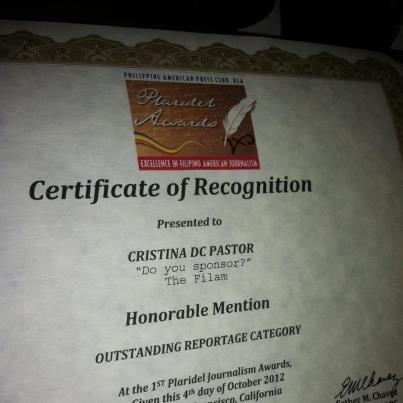Press Club warns of disaster fraud: ‘Important to use our heads before we give with our hearts’
Make a generous donation but beware of scams and bogus solicitations. More important: Practice due diligence to make sure that your donations are making a real and direct impact on the devastated lives of the victims of Typhoon Haiyan (Yolanda) in the Philippines.
When the Super Typhoon swept through the Visayas, it destroyed billions worth of infrastructure, damaged an estimated 1.1 million houses and displaced 3.43 million people, according to government estimates as of November 25. People from around the world have been inspired to give as they see pictures or videos of typhoon-ravaged parts of the Philippines. Charities, nonprofits, associations, local businesses, restaurants and well-intentioned citizens have actively solicited donations to help victims and their families.
It is heart-warming to know that the ‘bayanihan’ spirit can move people to action. The problem is that it is not easy to tell the difference between scams and legitimate appeals for assistance. It might be difficult to get a sense of which charities or disaster relief programs to trust. Compounding these issues is an urgent reality: Families in the Philippines, especially children and the elderly, need food, water and emergency medical supplies. They need help. Right now.
So what can be done? The Filipino American Press Club of New York would like the community to take great heed.
If you have already donated money to a charity, a benefit or a cause, follow up with the organizers or third-hand fundraisers who contacted you. Ask them about the total donations that were collected. Inquire, even after the fact, if they are aware if the funds and relief goods have reached the typhoon victims. Frequently, people who fund-raise lend their names to specific charities or disaster relief programs, so it is in their best interest to be made fully aware of how their fundraising efforts have made a real difference. What percentage of our donations went to the charity, and what percentage went to the fundraiser? Did a charity meet our own accountability standards? Ask them if they can post or provide a detailed account of how those funds were specifically allocated.
It is important to use our heads and think before we give with our hearts. Although we have been inspired to open up our wallets to victim assistance programs, we need to do our homework before we give. Donations intended for Typhoon Haiyan victims may be diverted by charity scams, for example. Scams often follow disasters with fraudulent individuals collecting money for charities that don’t exist or that don’t spend the money in ways they’ve promised.
Some nonprofits are not financially healthy, which means they may not have sufficient resources to get the job done under difficult circumstances. Organizations without some financial reserves can create difficulties if they are trying to fund-raise at the same time they are trying to provide services. Charities often give the option to designate our giving to a specific disaster. That way, we can ensure our funds are going to disaster relief, rather than a general operating fund.
Right now, delivering emergency aid has been the main priority. But when the emergency subsides, longer-term rebuilding will become necessary. The situation is just as tragic in the more isolated areas, such as Bantayan Island off the coast of Cebu, Danajon Bank in northern Bohol, Panay Island further west, the Palawan municipality of Linapacan, or coastal towns in Eastern Samar. These places have been overlooked because of their relatively small populations in comparison to Tacloban City and Guiuan — and because the international media has concentrated their coverage on these two ground-zero cities which lie farther south.
To overcome this geo-myopia, consider adopting a devastated town or a remote island that still has not received aid. In fact, consider setting aside donations specifically to groups and organizations that are experienced in reconstruction and infrastructural rebuilding. We would prefer that the outposts you help be not just your hometown.
If you do not have time to do the research, ask your congregation or a group that you are involved in. Consider asking an investigative journalist to track down the facts for you. Through this “third-hand” connection, we can all get a sense of which charities or relief programs to trust.
For many Filipino families digging out of the worst typhoon to hit land ever recorded, the information we can crowd-gather and share about disaster relief and reconstructions efforts can be a form of aid. It has the potential to truly save lives. — Randy Gener, writing in behalf of the Filipino American Press Club of New York













Recently, my wife pointed out to me the increase in the number of “Hoki hoki” shops popping up in the neighbourhoods. We stopped to look at what they were selling. Lots and lots of new clothing. The boxes were clearly marked as donations from several American churches; to the people of the Philippines (via local churches).
“It’s more fun in the Philippines”
This is another example of the close cooperation between Philippine Customs and the Catholic Church.